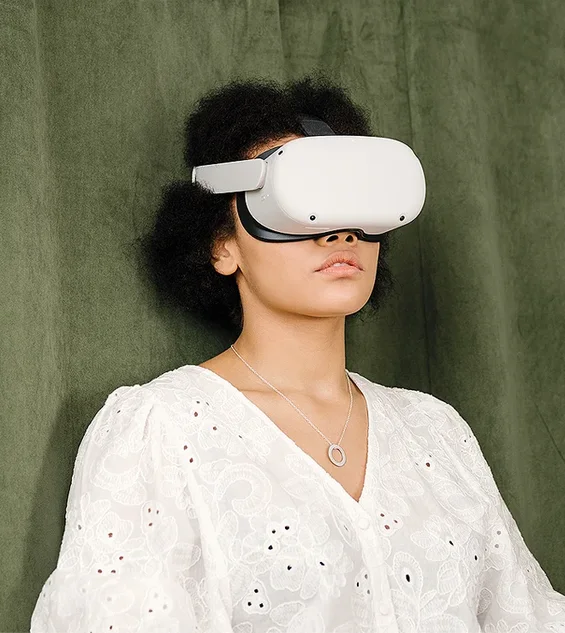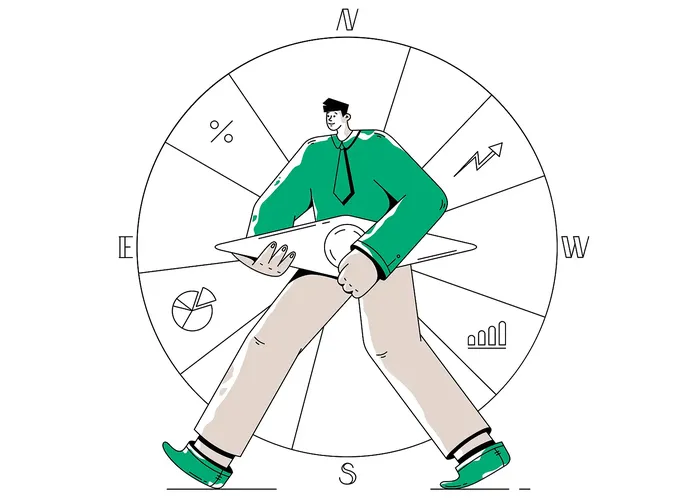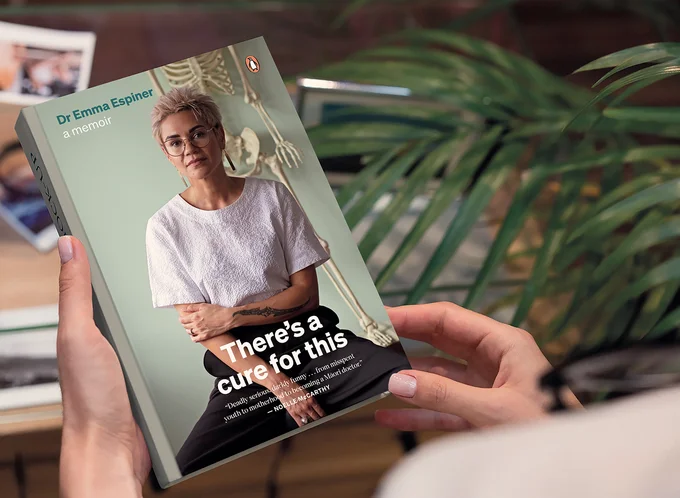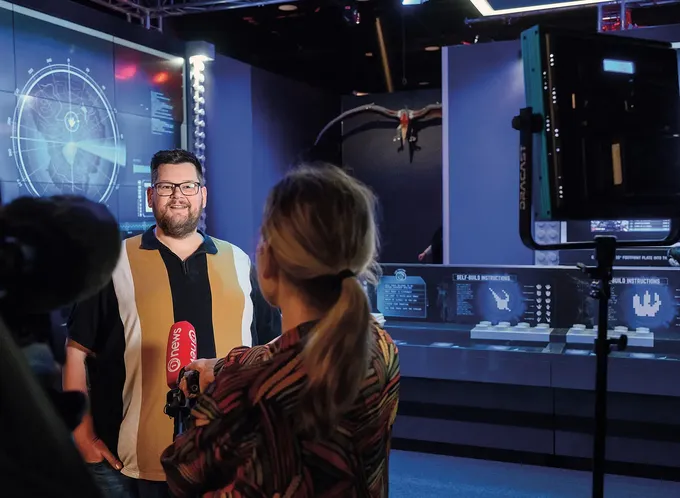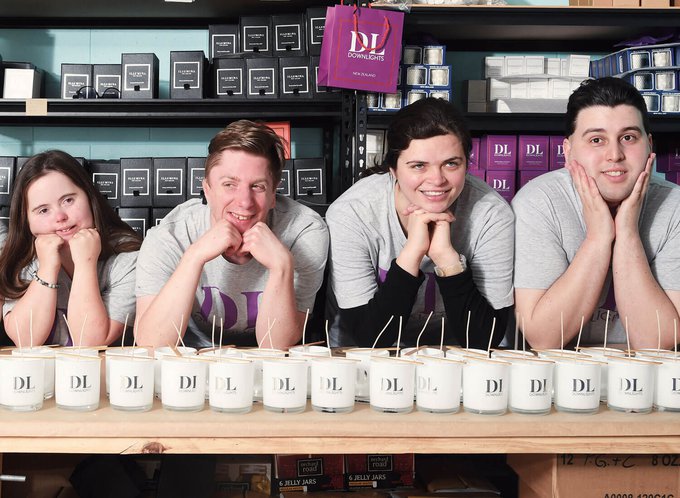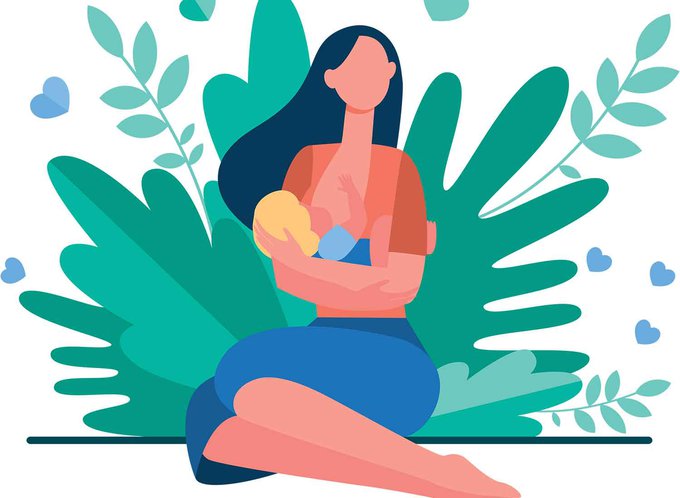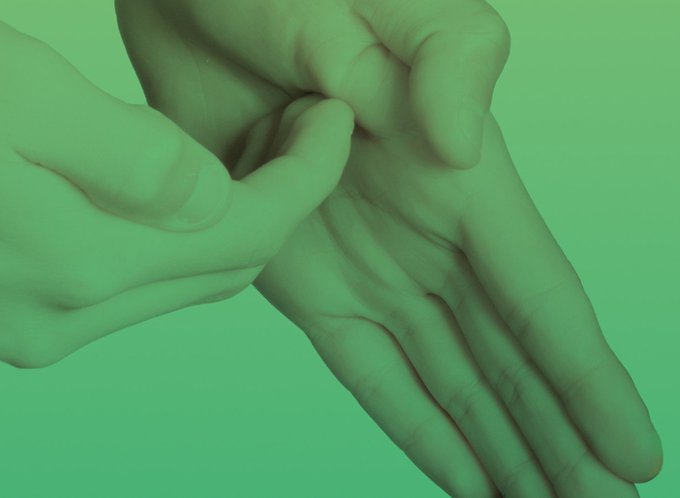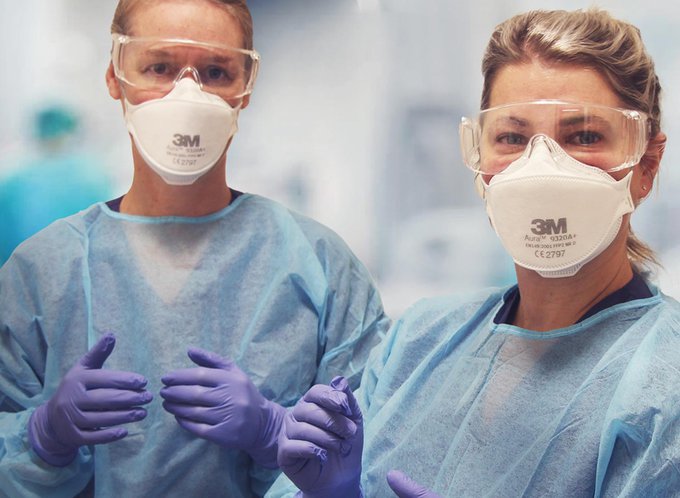Could donning a pair of high-tech goggles become a way to ease anxiety, help manage chronic pain or reduce feelings of loneliness? Virtual reality is no longer just for gamers and sci-fi fans – and it may have a growing role in the future of our healthcare.
From a distraction from pain to perhaps even altering the brain, experts across Aotearoa New Zealand and beyond are exploring how virtual reality (VR) can support our health and wellbeing.
How it affects the brain and our senses isn’t completely known, but burgeoning research and anecdotal evidence suggests we’ll soon be seeing more of it in specialist clinics and healthcare settings.
So what exactly is it? Virtual reality is technology that creates an immersive, computer-generated environment. By wearing a VR headset, users can look around this virtual world and depending on the program, touch and interact with objects in the digital space.
It’s already used in hyper-realistic simulations to help train medical students, as a calming therapeutic recreation approach for people living with dementia and as a way to encourage movement. In Aotearoa New Zealand, researchers are looking into the possibilities of VR for everything from managing labour pain to helping teens quit vaping.
Here, we talk to 2 healthcare professionals and a tech developer about how the virtual world is bringing real-life benefits.
A different take on pain management
Imagine you had ongoing pain in your arm – a pain so persistent that medication did little to ease the ache, and your doctors couldn’t identify the physical cause. That’s the reality for thousands of people around the world with complex regional pain syndrome (CRPS), a debilitating and little understood condition that can develop after a medical procedure and, in some cases, persist years after the physical wounds that triggered it have healed.

At Auckland University of Technology, CRPS is a focus for psychologist Dr Debbie Bean, who is part of a research group looking into the way VR can be used to help manage chronic pain.
“For me, the most interesting application of VR for chronic pain management is the ability to manipulate the person’s perception of their body using the virtual world,” she says. “We know that people with chronic pain often misperceive the painful area in terms of its size, shape, location or the way it looks, and with VR, you can manipulate that.”
While other research has focused on VR as a pain distraction tool, as a form of exposure therapy to encourage the person to use the painful limb more often or as a way to promote exercise, the AUT team is taking a different tack.
“With complex regional pain syndrome, we’ve found that using virtual reality to make the affected limb appear smaller, further away or transparent makes it feel less painful,” says Debbie, who honed a range of specialised skills at The Auckland Regional Pain Service before switching to academia.
“As humans, our visual information is so important – seeing really is believing, and we believe our vision over all of our other senses. So if we can use VR to show healthy and freely moving body parts, that can provide pain relief.”
In conjunction with Auckland company RUSH Digital, the team has recently developed its first prototype – a program that uses a pair of virtual hands. So far, early research has shown that headset wearers are quick to adopt the nimble computerised hands as their own, even if they appear through the goggles as cartoon-like or brightly coloured.
“We know that, with certain pain conditions like phantom limb pain, the brain regions associated with that limb change and the extent of the change correlate with the amount of pain. So if you can stimulate those regions through something like VR, potentially you can alter someone’s pain.”
In the future, she hopes VR could make treatment for pain management more accessible, especially in a country like New Zealand where there are few pain clinics outside of the main cities.
“Something like this has huge potential, particularly as the tech becomes more available and lower cost and as more research means the applications are better understood,” she says.
“Could VR one day replace your physiotherapist, psychologist, occupational therapist, specialised nurses and pain clinic programmes? I’m not so sure about that. But our long-term goal would be to make this software available through healthcare providers. Alongside supervised rehabilitation and movement, I think VR could be a key part of the puzzle for helping people with complex regional pain syndrome function better in their everyday lives.”
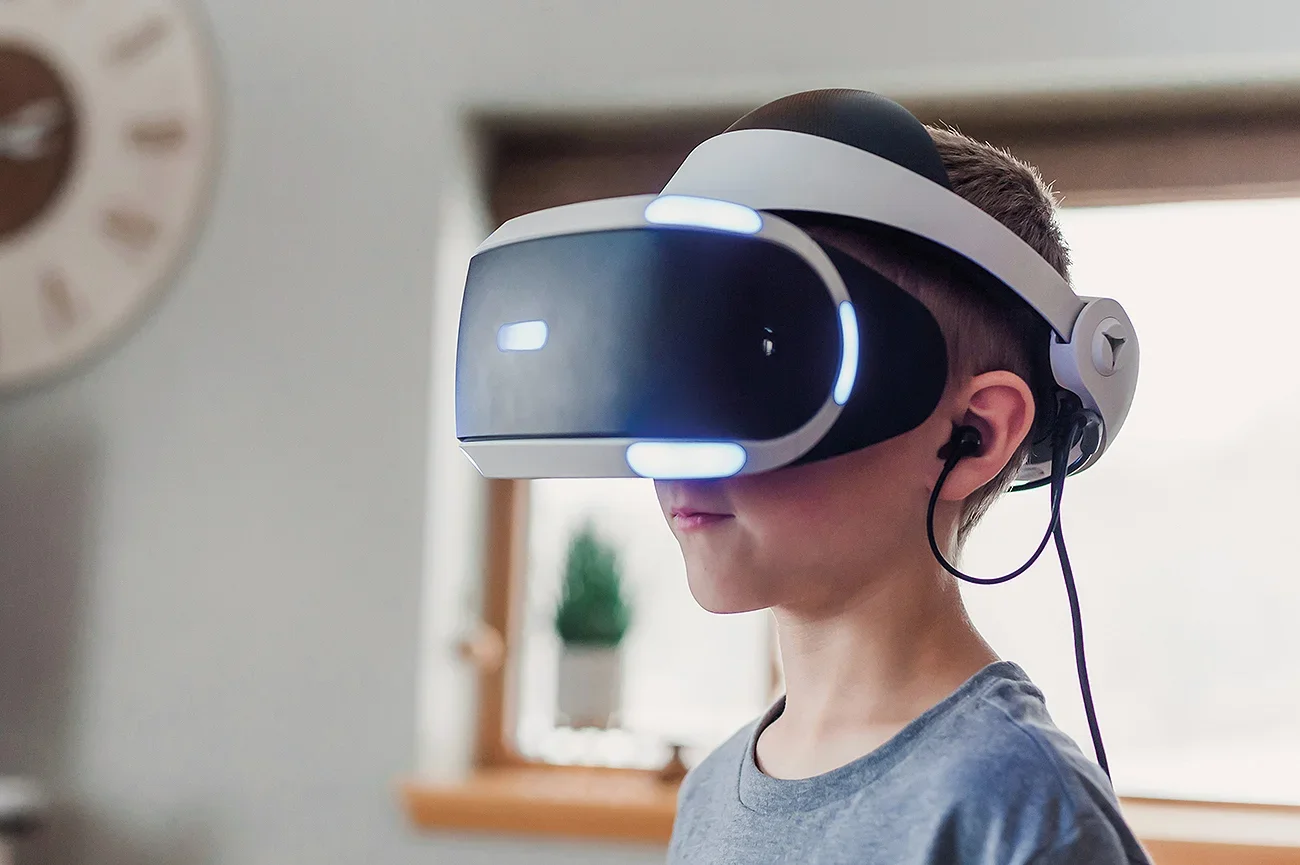
Tech tools to treat anxiety
Tech developer Adam Hutchinson has carved a career out of solving problems. He’s created apps to promote responsible fishing and to help campers find their perfect spot. But these days, his focus is on using VR to treat anxiety disorders.
The idea came to me during Covid times when I was playing around with a VR headset,” he says. “After a lot of research and a lot of conversations with clinicians and psychologists, I learned that around 80% of people with anxiety disorders don’t ever get treatment, and cost is the biggest reason. So I wanted to make something accessible and affordable.”
At his Christchurch-based startup oVRcome, Adam and his 10-strong team set to work building a program that lets users gain controlled exposure to scenarios that trigger phobias and anxieties.
With a simple VR headset that is posted out to people who download the app, users can access a catalogue of realistic virtual worlds, like the inside of a plane for those scared of flying or a medical setting for people who are fearful of hospitals.
So far, 2 clinical trials in conjunction with Otago University have proven the app has wide-ranging benefits. But the program goes beyond simply letting people face their fears. The oVRcome team has developed a clinician portal that lets healthcare professionals access virtual environments with their patients, and a range of data collection tools enable users to pinpoint their unique triggers and tailor the experience to best suit their needs.
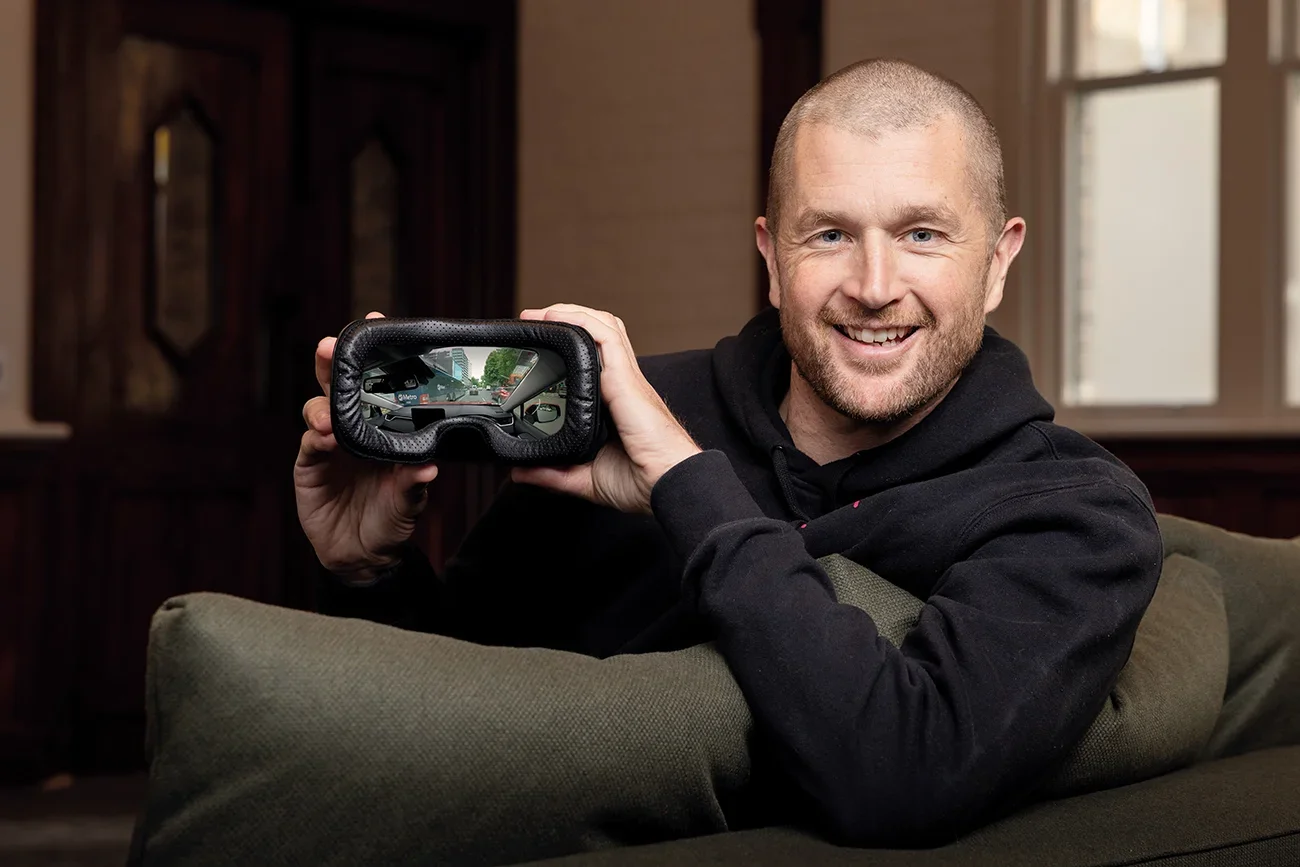
Tech developer Adam Hutchinson says VR can be used as exposure therapy to treat a range of anxiety disorders and phobias.
Alongside the main app, oVRcome is working with the Ministry of Education on a VR program to help teens quit vaping, and further afield, it has even caught the eye of the UK’s public health system.
“We’ve recently signed a contract with the NHS where we helped children and adults with autism to experience hospital environments virtually before their appointment. This was developed because of the high cancellation rates due to anxiety.
“Another one was a contract with Allianz in Australia where we developed a bespoke program to help people with rehabilitation after a serious motor vehicle accident. This stuff has been a game changer for the oVRcome team, and it highlighted how there is so much potential out there for this software across a range of organisations.
“It’s amazing to be part of something that makes treatment more accessible and affordable for people. And it’s also about showing how technology can be used for good – to solve problems and to have a positive social impact.”
Extra support for seniors
In aged care communities across New Zealand, VR isn’t just a way to travel the globe without leaving the lounge. It’s about evoking memories, combating loneliness, finding calm and reconnecting with emotions.
“It’s about providing moments of joy,” says Orquidea Tamayo Mortera, National Therapeutic Recreation Lead at Summerset. “Virtual reality has so many applications in aged care, but we mostly use it to enrich wellbeing through therapeutic recreation.”
And Orquidea has no shortage of heartwarming stories. There was the end-of-life resident who got their wish to swim with the dolphins granted through a (virtual) dip in the ocean and the man who found peace by returning (in a computer-generated sense) to his beloved hometown.
“We had a resident who was known to be a bit short-tempered,” she says. “We asked him about the city he was from, found a VR tour of the area and invited him one day to try the headset. After a while with the goggles on, he started saying ‘I know that place’ and ‘Yeah, I’ve been there!’ At the end of the session he got quite emotional and said, ‘Thank you so much, now I can die in peace.’ He actually did die shortly after.
“For us, VR is about purposeful engagement – getting to know a person and being able to provide unique experiences that are meaningful to them. It’s about helping someone to find a healing moment. It’s all the good stuff for the soul.”
Summerset worked with Australian tech company SilVR Adventures to introduce VR to villages in 2022. Aside from the odd case of vertigo or the headset occasionally being too heavy for a smaller face, it’s been a resounding hit.
Orquidea says that, while many of the independent living residents get a kick out of taking the googles for a spin, it’s the Care Centre and Memory Care Centre residents who are the most profoundly affected by the tech.
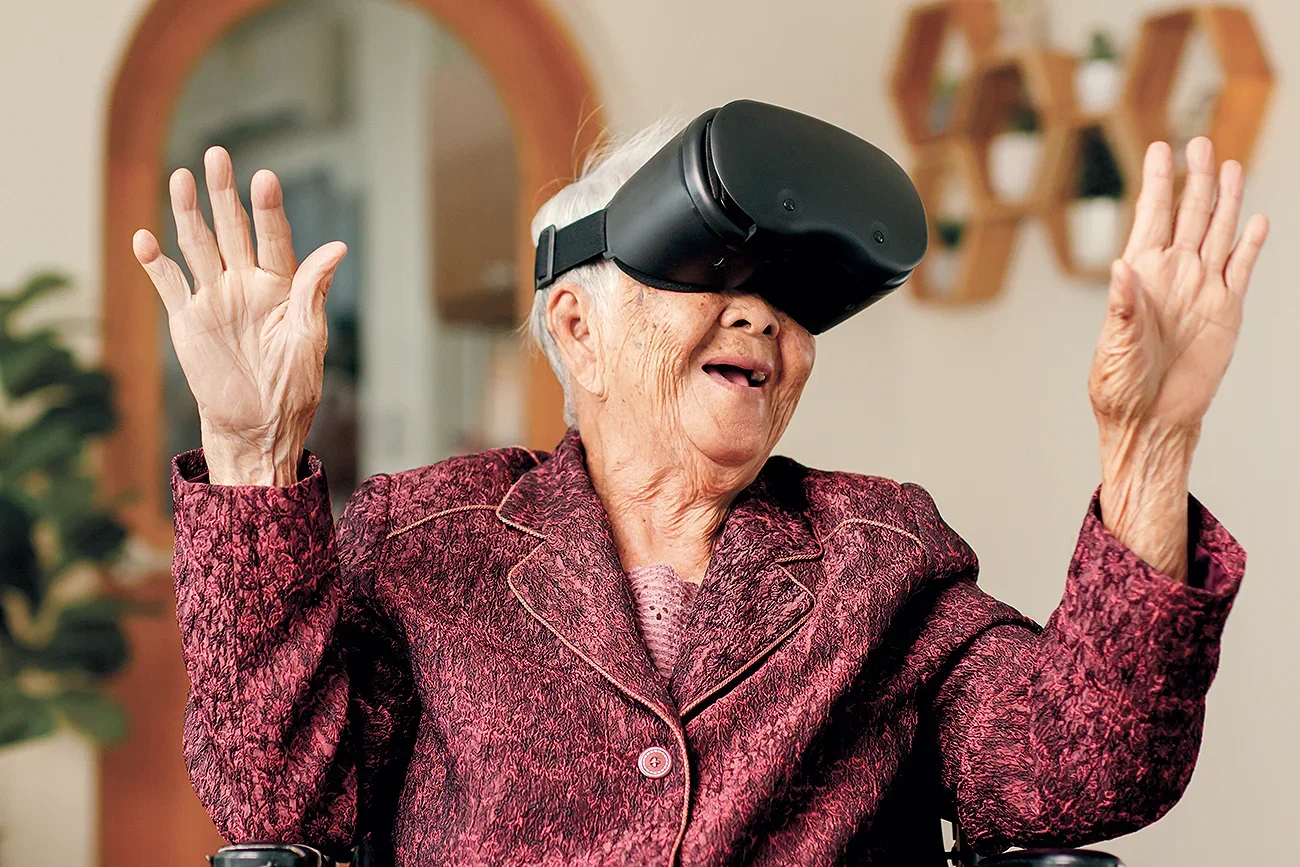
She says that, for people living with dementia, VR can be a tool for calming agitation, and for others, it’s the power of finding connection through shared experiences.
“Social isolation and loneliness are major health problems that impact a lot of people across aged care and all of society. So using VR in group settings and doing a tour together is an effective way to invite conversations – we’ll discuss where we’re going, who’s been before, favourite sights or past travel experiences. It becomes a space for reminiscence and validation, and many feel comforted after a session.
“In a way, it’s the emotions we see from residents that are the biggest indicator of how effective it is. These emotions had of course always been there, but for some, VR offers a way to help express them. It’s not for everyone, but I think as a tool it’s fantastic. And we know the residents love it.”
Know someone who might enjoy this?
Read this next
-
August 2023
What’s your money type?
-
November 2023
Called to theatre
-
November 2023
From battlefields to bricks
-
April 2024
Space odyssey
Greater good
See all-
March 2021
Candles for a cause
-
March 2021
Helping Kiwi babies thrive
-
March 2021
Creating a Deaf-inclusive Aotearoa
